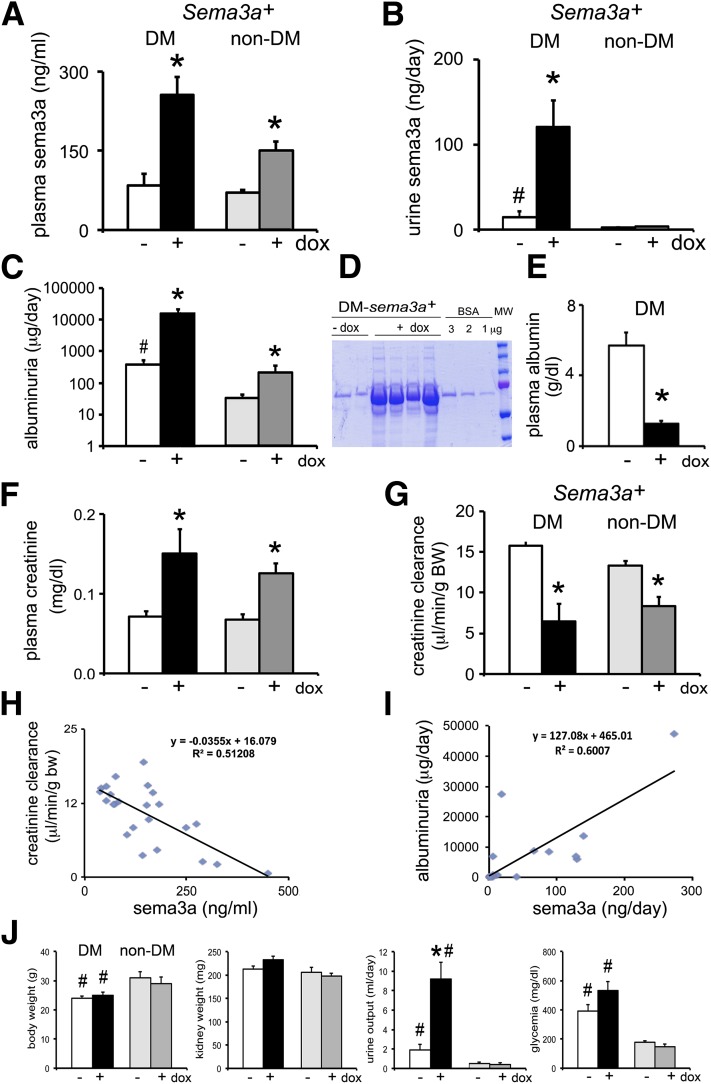Figure 2.
Excess Sema3a in diabetic mice causes massive proteinuria and renal failure. A: Sema3a+ gain of function and diabetes have additive effects, increasing plasma concentrations of sema3a. B: Diabetes increases sema3a excretion, and Sema3a+ gain of function induces a synergistic increase. C: Quantification of albuminuria by ELISA (notice the logarithmic scale): Sema3a+ gain of function in diabetic mice causes massive albuminuria, ∼40-fold higher than in control diabetic mice. D: Coomassie blue stain of urine resolved by SDS-PAGE illustrates proteinuria (in the nephrotic range) in diabetic mice with Sema3a+ gain of function (DM-Sema3a+ +dox). E: Diabetic mice with Sema3a+ gain of function develop hypoalbuminemia. F–H: Sema3a+ gain of function in diabetic mice induces renal failure. F: Sema3a+ gain of function induces a doubling of plasma creatinine in diabetic mice and a lesser increase in nondiabetic mice. Creatinine clearance decreases ∼60% in diabetic mice with Sema3a+ gain of function (G) and correlates inversely with plasma sema3a concentration (H). I: Albuminuria correlates directly with urine sema3a excretion. J: Bar graphs show body weight, kidney weight, urine output, and blood glucose in all experimental groups. Notice severe polyuria in Sema3a+ gain-of-function diabetic compared with control diabetic mice, without a significant change in random blood glucose. *P < 0.05 vs. corresponding control. #P < 0.05 vs. nondiabetic control. White bars are diabetic controls (-dox); black bars are diabetic sema3a gain-of-function (+dox); light gray are nondiabetic (-dox); dark gray are nondiabetic sema3a gain-of-function (+dox). BW, body weight; DM, diabetes mellitus; dox, doxycycline; MW, molecular weight.

